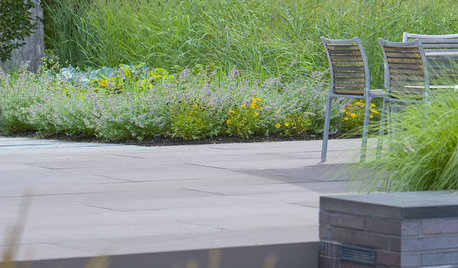Mango seed... anyone plant one?
DallasCactiLover
19 years ago
Related Stories

GARDENING GUIDESSeeds or Seedlings? How to Get Your Garden Started
Growing delicious herbs and vegetables starts with knowing your goals and when you want to plant
Full Story
FLOWERS AND PLANTSPanicum Virgatum, a Prairie Beauty Many Gardeners Can Enjoy
Switchgrass adds color through the year and is a natural ‘seed feeder’ for birds
Full Story
FARM YOUR YARDIf You Have Room for Only One Fruit Tree ...
Juice up a small garden with one of these easier-care or worth-the-effort fruit trees for a mild climate
Full Story
GARDENING GUIDESInvite Mining Bees to Your Garden by Planting Their Favorite Plants
Look for mining bees (Andrena) pollinating woodland wildflowers in U.S. gardens this spring
Full Story
GARDENING GUIDESHouzz TV: Make a Worm Bin for Rich Soil and Happy Plants
A worm-powered compost bin that can fit under a sink turns food scraps into a powerful amendment for your garden. Here’s how to make one
Full Story
FARM YOUR YARDIf You Have Room for Only One Summer Crop ...
Get an edible that’s long on flavor even if you’re short on space, with a long-time gardener’s favorite picks
Full Story
KITCHEN DESIGNKitchen Recipes: Secret Ingredients of 5 One-of-a-Kind Cooking Spaces
Learn what went into these cooks’ kitchens — and what comes out of them
Full Story
GARDENING GUIDESGreat Design Plant: Cephalanthus Occidentalis
Buttonbush is an adaptable woody shrub with delightful pincushion flowers
Full Story
GROUND COVERSNative Alternatives to English Ivy, Japanese Pachysandra and Periwinkle
These shade-loving ground covers are good for the environment and say something about where you are
Full Story
GARDENING GUIDES9 Clay-Busting Native Flowers for Summer Sun
These plants survive and even thrive in tough clay soil east of the Rocky Mountains
Full StorySponsored






Rizz
baci
Related Professionals
Londonderry Landscape Architects & Landscape Designers · Citrus Heights Landscape Architects & Landscape Designers · Glen Ellyn Landscape Architects & Landscape Designers · Aloha Landscape Contractors · Brookline Landscape Contractors · Cornelius Landscape Contractors · Eustis Landscape Contractors · Hendersonville Landscape Contractors · Pueblo West Landscape Contractors · Rockland Landscape Contractors · South Lake Tahoe Landscape Contractors · Teaneck Landscape Contractors · East Norriton Landscape Contractors · Apex Roofing & Gutters · Damascus Roofing & Guttersjun_
SilverFlower3a
megzzz
Violet_Z6
tasty
yukkuri_kame
wally_1936
Dinudaya